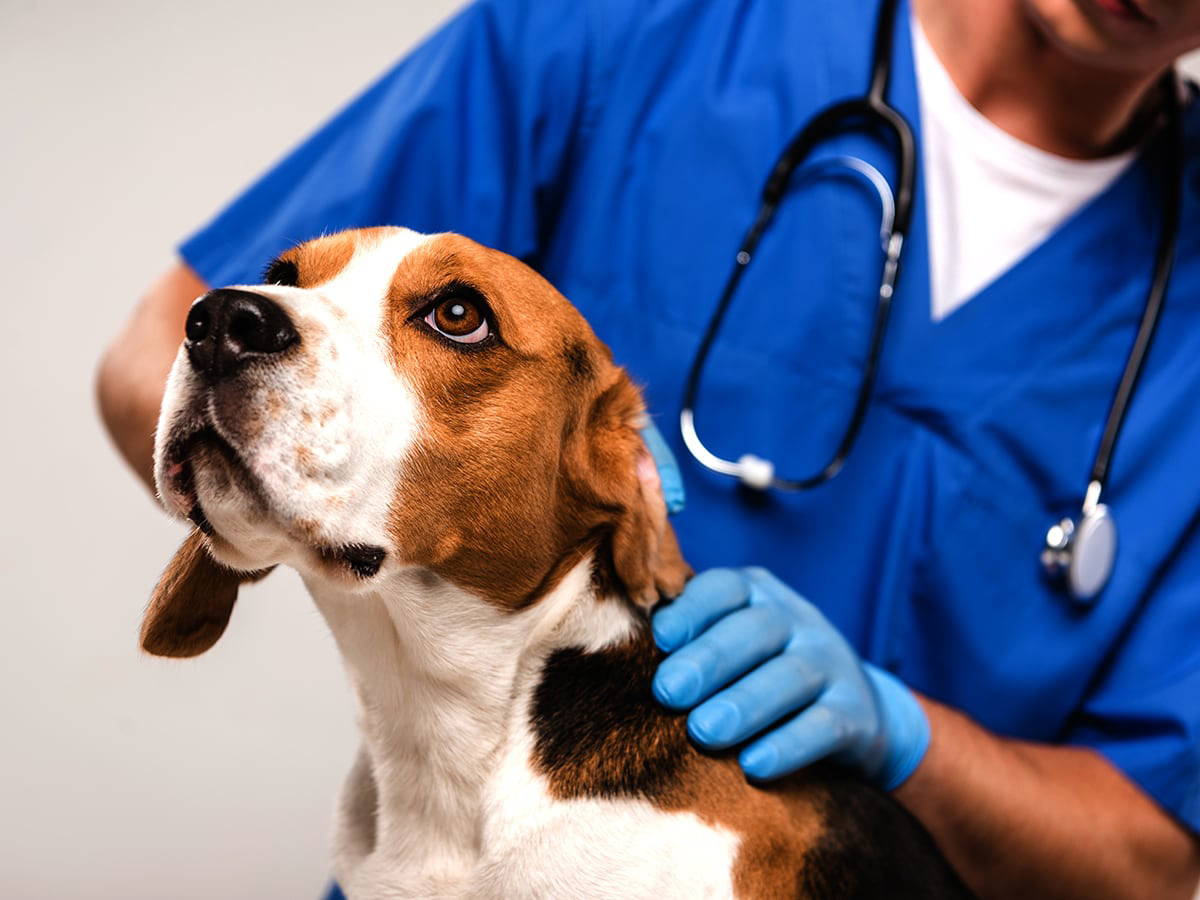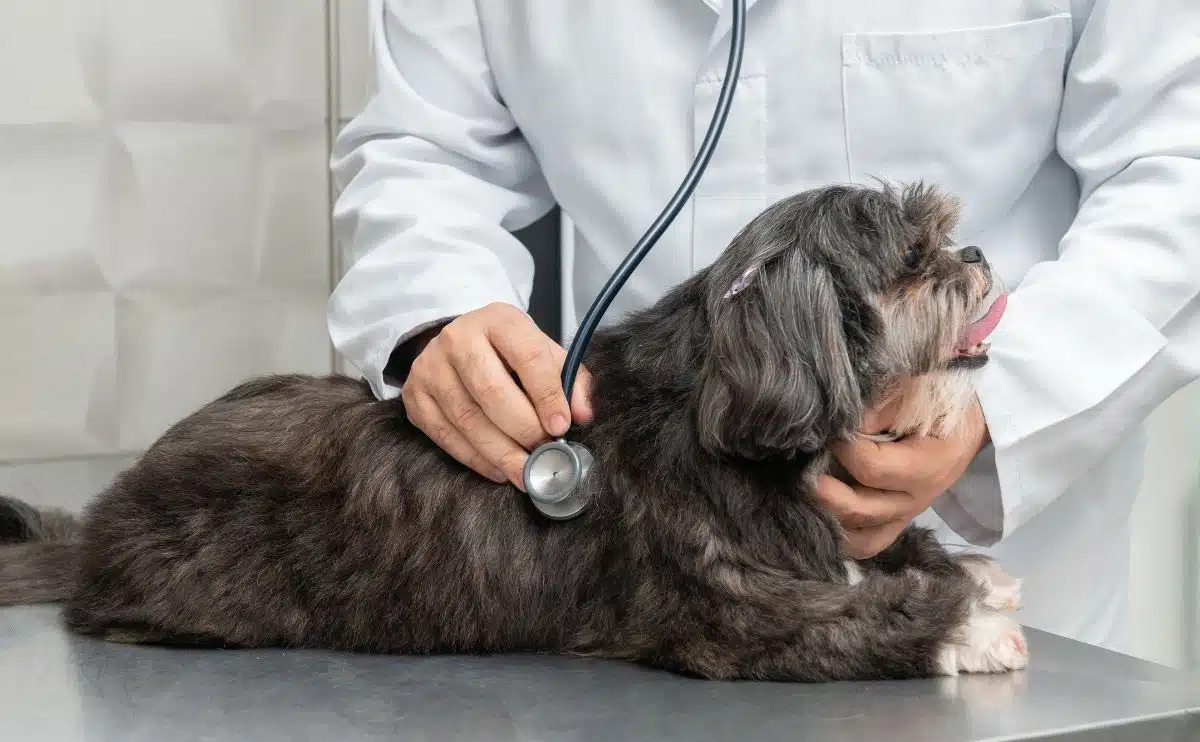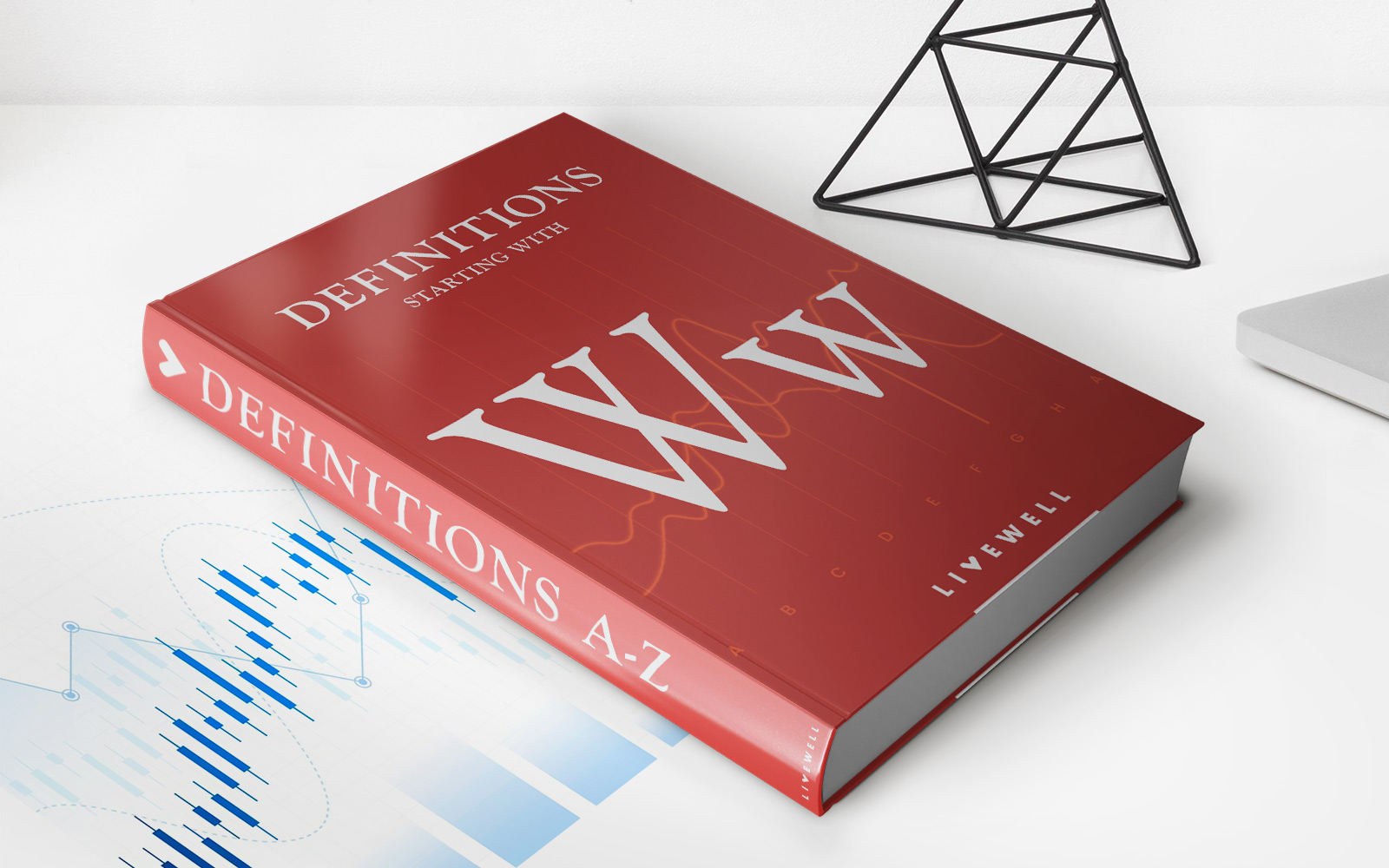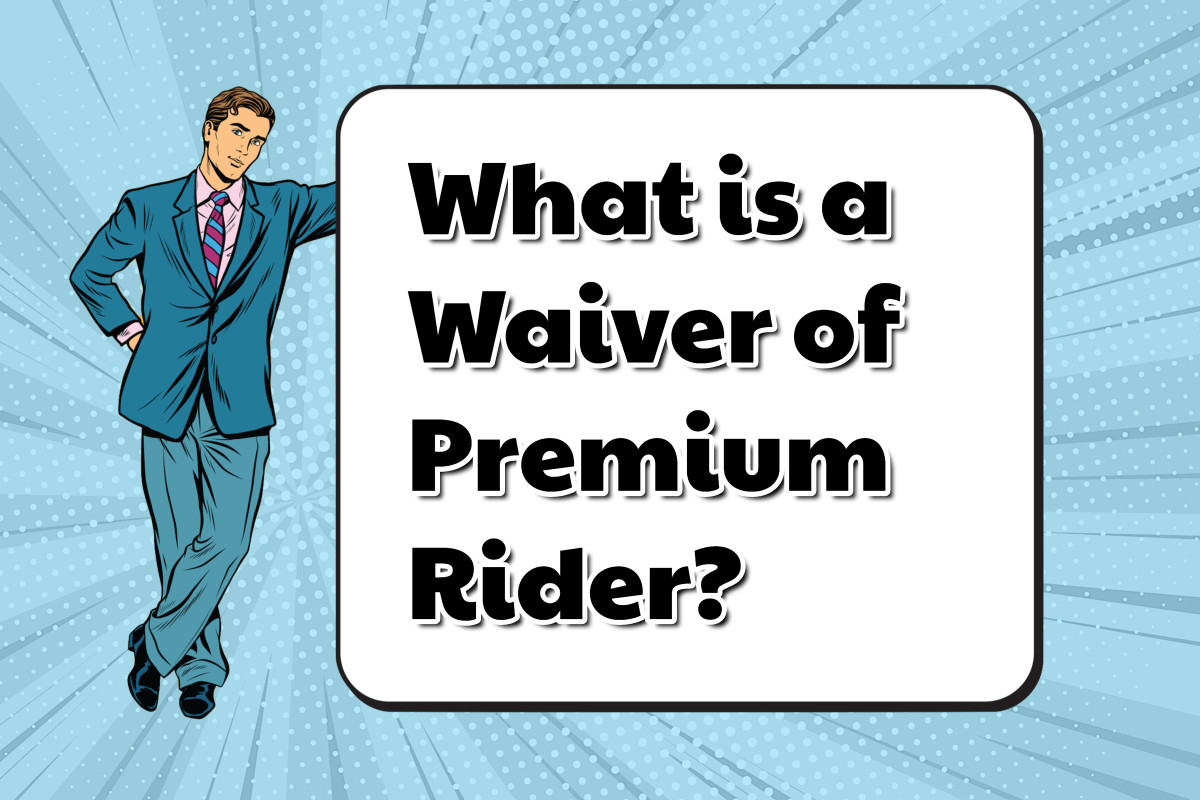

Finance
What Is The Waiting Period For Pet Insurance?
Modified: December 30, 2023
Learn about the waiting period for pet insurance and how it affects your finances. Find out how long you need to wait before your pet is covered.
(Many of the links in this article redirect to a specific reviewed product. Your purchase of these products through affiliate links helps to generate commission for LiveWell, at no extra cost. Learn more)
Table of Contents
Introduction
When it comes to protecting our furry friends, pet insurance can be a valuable asset. Just like with human health insurance, pet insurance helps cover the cost of medical expenses for our beloved pets. However, before you can fully take advantage of the benefits, there’s typically a waiting period involved.
The waiting period is the duration of time that must pass before certain coverage aspects of the policy become effective. During this period, specific conditions or events may not be covered by the insurance provider. Understanding the waiting period is crucial for pet owners, as it determines when you can start receiving coverage for your pet’s medical needs.
Although waiting periods can vary depending on the insurance provider and policy type, they usually range from a few days to a few weeks. The purpose of the waiting period is to prevent fraudulent claims and ensure that pet owners are not solely purchasing insurance when their pets need immediate medical attention.
It’s important to note that waiting periods typically only apply to new policies or when you make changes to existing coverage. If your pet has already been insured for a certain period of time, the waiting period does not generally apply to conditions that occurred during that time.
In the following sections, we will explore the different types of waiting periods and their durations, as well as the various factors that can affect the length of the waiting period. Understanding these details will help pet owners make informed decisions when it comes to choosing the right pet insurance policy.
Understanding Pet Insurance Waiting Period
The waiting period in pet insurance is the specific period of time that must pass before certain coverage aspects of the policy become effective. During this time, the insurance provider will not provide coverage for specific conditions or events. The waiting period serves as a protection for the insurance company, ensuring that they are not immediately burdened with claims for pre-existing conditions or injuries that occurred prior to obtaining the policy.
It’s important to note that different insurance providers may have different waiting period policies. Some may have a blanket waiting period for all types of coverage, while others may have different waiting periods for different types of coverage, such as accidents and illnesses. Understanding the waiting period terms of your pet insurance policy can help you manage your expectations and make informed decisions regarding your pet’s health care needs.
During the waiting period, it’s important to carefully read and follow the terms and conditions of the policy. If your pet requires immediate medical attention during this time, it may be necessary to pay for the expenses out of pocket. It’s also crucial to keep in mind that any conditions or injuries that occur during the waiting period will likely be considered pre-existing and may not be covered by the insurance provider in the future.
Additionally, it’s worth noting that the waiting period starts from the policy effective date, which is typically the date the policy is purchased or the date specified by the insurance provider. The waiting period often varies in duration depending on the insurance company and the specific policy chosen.
Understanding the waiting period for pet insurance will help you plan ahead and ensure that you have sufficient coverage for your furry friend’s medical needs. It’s essential to be aware of the waiting period requirements and to take them into consideration when selecting a pet insurance policy.
Types of Waiting Periods
When it comes to pet insurance, there are generally three types of waiting periods that pet owners should be aware of. These waiting periods apply to different aspects of coverage and help insurance providers manage risk and avoid fraudulent claims. Understanding these waiting periods is crucial in determining when your pet will be eligible for coverage.
1. Initial Waiting Period: This is the waiting period that applies to all new pet insurance policies. It is the length of time that must pass from the policy’s effective date before any coverage becomes active. It typically ranges from a few days to a few weeks, depending on the insurance provider. During this initial waiting period, no claims will be accepted, and no coverage will be provided by the insurance company.
2. Illness Waiting Period: The illness waiting period specifically applies to coverage for illnesses and diseases. After the initial waiting period, which varies from policy to policy, the illness waiting period begins. It is the period during which coverage for illnesses and related treatments will not be provided. This waiting period can range from a few days to a few months, depending on the insurance provider and policy. It is essential to review the policy terms to understand the specific duration of the illness waiting period.
3. Accident Waiting Period: The accident waiting period applies to coverage for accidents and injuries. Just like the illness waiting period, it starts after the initial waiting period has ended. During this period, coverage for accidents and injuries is not provided. The accident waiting period can also vary depending on the insurance provider and policy, typically ranging from a few days to a few weeks. Ensuring you understand the duration of the accident waiting period is crucial to manage unexpected medical costs for your pet.
It’s important to note that waiting periods for each type of coverage may vary from one insurance provider to another. While some insurance companies may have waiting periods that apply to both illnesses and accidents, others may have separate waiting periods for each. Therefore, carefully reading and understanding the terms and conditions of your pet insurance policy is essential to know when your pet will be eligible for coverage.
Initial Waiting Period
The initial waiting period is the first waiting period that pet owners encounter when purchasing a new pet insurance policy. It is the duration of time that must pass from the policy’s effective date before any coverage becomes active. During this waiting period, no claims will be accepted, and no coverage will be provided by the insurance company.
The length of the initial waiting period can vary depending on the insurance provider and the specific policy chosen. It is typically a few days to a few weeks. The purpose of the initial waiting period is to protect the insurance company from fraudulent claims and ensure that pet owners are not taking out insurance only when their pets require immediate medical attention.
It’s important to carefully review the terms and conditions of your pet insurance policy regarding the initial waiting period. Understand when the waiting period begins and how long it lasts. Typically, the waiting period starts from the policy’s effective date, which is the date the policy is purchased or the date specified by the insurance provider.
During the initial waiting period, it’s important to note that any conditions or injuries that occur will likely be considered pre-existing and may not be covered in the future. If your pet requires immediate medical attention during this waiting period, you may need to bear the expenses out of pocket.
Once the initial waiting period is over, the coverage for accidents and illnesses will become active. It’s important to keep in mind that waiting periods usually only apply to new policies or when making changes to existing coverage. If your pet has already been insured for a certain period of time, the waiting period does not typically apply to conditions that occurred during that time.
Understanding and being aware of the initial waiting period is crucial for pet owners when choosing a pet insurance policy. It allows you to plan for your pet’s medical needs and avoid unexpected expenses during the waiting period.
Illness Waiting Period
The illness waiting period is a specific waiting period that applies to coverage for illnesses and diseases in pet insurance policies. After the initial waiting period, which varies depending on the insurance provider and policy, the illness waiting period begins. During this waiting period, coverage for illnesses and related treatments will not be provided by the insurance company.
The duration of the illness waiting period can range from a few days to a few months, depending on the insurance provider and the specific policy chosen. It’s important to carefully review the terms and conditions of your pet insurance policy to understand the duration of the illness waiting period.
The purpose of the illness waiting period is to prevent pet owners from taking out insurance when their pet is already showing signs of illness or has a pre-existing condition. The waiting period gives the insurance company time to assess the pet’s health status and ensure that they are not immediately burdened with claims for conditions that existed before obtaining the policy.
During the illness waiting period, it’s crucial to keep in mind that any illnesses or diseases that occur will likely be considered pre-existing conditions and may not be covered in the future. If your pet experiences an illness or requires treatment during this waiting period, you may need to cover the expenses out of pocket.
Once the illness waiting period is over, coverage for illnesses and related treatments will become active based on the terms of your pet insurance policy. It’s important to note that waiting periods usually only apply to new policies or when changes are made to existing coverage. If your pet has been continuously insured, the waiting period does not typically apply to conditions that occurred during that time.
Understanding the illness waiting period is essential for pet owners who are considering pet insurance. It allows you to plan for your pet’s healthcare needs and be aware of any limitations or exclusions during the waiting period. Carefully reviewing the policy terms and asking questions to the insurance provider will help you make an informed decision about your pet’s health coverage.
Accident Waiting Period
The accident waiting period is a specific waiting period that applies to coverage for accidents and injuries in pet insurance policies. It begins after the initial waiting period, which varies depending on the insurance provider and the specific policy. During this waiting period, coverage for accidents and injuries will not be provided by the insurance company.
The duration of the accident waiting period can range from a few days to a few weeks, depending on the insurance provider and policy terms. It’s crucial to review the details of your pet insurance policy to understand the specific duration of the accident waiting period.
The purpose of the accident waiting period is to prevent pet owners from taking out insurance when their pet has already experienced an accident or injury. This waiting period allows the insurance company to assess the pet’s health status and ensure that they are not immediately faced with claims for conditions that occurred before obtaining the policy.
During the accident waiting period, it’s important to note that any accidents or injuries that occur will likely not be covered by the insurance provider. If your pet experiences an accident or injury during this waiting period, you may need to cover the medical expenses yourself.
Once the accident waiting period is over, coverage for accidents and injuries will become active based on the terms of your pet insurance policy. However, it’s important to remember that waiting periods typically only apply to new policies or when changes are made to existing coverage. Conditions that occur after the waiting period will generally be eligible for coverage.
Understanding the accident waiting period is crucial for pet owners considering pet insurance. It allows you to be prepared for any unexpected accidents or injuries and plan for your pet’s healthcare needs during the waiting period. Reviewing the policy terms and discussing any concerns with the insurance provider will help ensure that you choose the right coverage for your pet’s wellbeing.
Waiting Period Exclusions
While pet insurance waiting periods are designed to protect both the insurance company and the policyholder, there may be certain exclusions during the waiting period. These exclusions refer to specific conditions or events that are not covered by the insurance provider until the waiting period has ended.
The waiting period exclusions vary depending on the insurance provider and the specific policy. It’s crucial to carefully review the terms and conditions of your pet insurance policy to understand the exclusions that may apply during the waiting period. Some common waiting period exclusions may include pre-existing conditions, specific illnesses or injuries, and certain breed-specific conditions.
One of the most significant exclusions during the waiting period is coverage for pre-existing conditions. Pre-existing conditions are medical conditions, illnesses, or injuries that existed before the policy’s effective date. Typically, any treatments or claims related to pre-existing conditions will not be covered during the waiting period or throughout the policy’s duration.
In addition to pre-existing conditions, specific illnesses or injuries may also be excluded during the waiting period. It’s essential to understand the specific conditions that your pet insurance policy excludes during this time. Some policies may exclude coverage for certain hereditary or congenital conditions, as well as conditions that are deemed high-risk or costly to treat.
Furthermore, certain breed-specific conditions may be excluded during the waiting period. Some insurance providers may have specific exclusions for genetic conditions that are common in certain breeds. It’s important to be aware of any breed-specific exclusions if you own a breed that is known to have a higher risk of certain health conditions.
Understanding the waiting period exclusions is vital for pet owners in managing their expectations and planning for their pet’s healthcare needs. It’s essential to carefully review the policy terms and ask questions to the insurance provider to ensure that you have a clear understanding of the exclusions that may apply during the waiting period.
Once the waiting period is over, coverage for the excluded conditions will typically become active based on the terms of your pet insurance policy. However, it’s important to note that pre-existing conditions may still not be covered even after the waiting period has ended.
By being aware of the waiting period exclusions, pet owners can make informed decisions about their pet’s insurance coverage and be prepared for any out-of-pocket expenses that may arise during this time.
Factors Affecting Waiting Period Length
Waiting periods in pet insurance can vary in length depending on several factors. Understanding these factors will help pet owners better navigate the process of choosing a pet insurance policy and managing their pet’s healthcare needs.
1. Insurance Provider: Different pet insurance providers may have varying waiting period lengths. Each company sets its own policies regarding waiting periods, so it’s important to compare and research different providers to find the one that aligns with your needs and expectations.
2. Policy Type: The type of policy you choose can also impact the waiting period length. Some policies may have a uniform waiting period for all aspects of coverage, while others may have different waiting periods for accidents, illnesses, and other specific conditions. Understanding the waiting period terms of your chosen policy is crucial for managing your pet’s healthcare expenses.
3. Existing Conditions: If your pet has pre-existing conditions, they may affect the waiting period length. Insurance providers typically do not cover pre-existing conditions, even after the waiting period. Be transparent about your pet’s health history when applying for insurance to ensure that you have a clear understanding of the waiting period implications.
4. Pet Age: The age of your pet can also impact the waiting period length. Some insurance providers may impose longer waiting periods for older pets, as they may be at a higher risk for certain conditions. It’s important to consider your pet’s age when selecting a policy and understand any age-related waiting period implications.
5. Breed and Species: Certain breeds or species may have specific waiting period requirements due to their susceptibility to certain health conditions. Insurance providers may impose longer waiting periods for breeds or species that are more prone to genetic or hereditary conditions. Researching the waiting period requirements for your pet’s specific breed or species is essential in selecting the right insurance policy.
6. Policy Changes: Making changes to an existing policy, such as adding or removing coverage options, may reset the waiting period. It’s important to review the terms and conditions of your policy and understand how any changes may affect the waiting period for specific aspects of coverage.
By considering these factors, pet owners can make informed decisions about their pet insurance coverage and have a clear understanding of the waiting period implications. It’s crucial to review policy terms, ask questions to the insurance provider, and consider your pet’s individual circumstances when selecting a policy to ensure suitable coverage for your pet’s healthcare needs.
Importance of Waiting Periods
Waiting periods play a crucial role in pet insurance policies, serving as a necessary measure for both the insurance provider and the policyholder. Here are some reasons why waiting periods are important in pet insurance:
1. Fraud Prevention: Waiting periods help prevent fraudulent claims. By implementing a waiting period, insurance companies can deter pet owners from acquiring insurance only when their pets require immediate medical attention, reducing the risk of fraudulent activity.
2. Risk Management: Waiting periods help insurance providers manage risk. They allow time for the insurance company to assess a pet’s health status without immediately shouldering the burden of potential claims for pre-existing conditions or injuries that occurred before obtaining the policy.
3. Cost Control: Waiting periods enable insurance providers to control costs. With the waiting period in place, insurance companies can ensure that new policyholders are not immediately submitting claims for costly treatments or procedures, helping to maintain a balance between premiums and coverage costs.
4. Coverage Clarity: Waiting periods provide clarity on when certain aspects of coverage become effective. They allow pet owners to understand when they can start receiving coverage for accidents, illnesses, or other conditions, helping them plan and budget for their pet’s healthcare needs accordingly.
5. Pre-existing Condition Exclusion: Waiting periods help enforce the exclusion of pre-existing conditions. Insurance providers typically do not cover conditions that existed before the policy’s effective date, and the waiting period establishes a clear distinction between pre-existing conditions and new conditions that occur after obtaining the policy.
6. Financial Planning: Waiting periods allow pet owners to plan their finances for out-of-pocket expenses. During the waiting period, if a pet requires immediate medical attention, pet owners are aware that they will need to cover the expenses themselves. This knowledge enables better financial planning and preparedness.
By understanding and appreciating the importance of waiting periods, pet owners can make informed decisions when selecting a pet insurance policy. They help ensure that pet insurance is used as a proactive measure for future healthcare needs rather than as a reactive response to immediate medical issues.
Conclusion
Waiting periods are an integral part of pet insurance policies, serving as a protection for both the insurance provider and the policyholder. While waiting periods may require patience from pet owners, they play a critical role in maintaining the integrity and sustainability of pet insurance coverage.
Understanding the different types of waiting periods, such as the initial waiting period, illness waiting period, and accident waiting period, is essential in managing expectations and planning for your pet’s healthcare needs. Knowing when coverage will become active allows you to make informed decisions regarding your pet’s medical expenses.
Factors that affect waiting period length, including the insurance provider, policy type, existing conditions, pet age, breed, and species, all play a significant role in determining the waiting period requirements. Considering these factors helps pet owners select the most suitable policy for their pet’s specific needs.
Waiting periods also provide clarity on coverage exclusions, such as pre-existing conditions, ensuring that pet owners understand the limitations of their policy. By being aware of waiting period exclusions, pet owners can plan and budget for out-of-pocket expenses that may arise during the waiting period.
While waiting periods may seem like a temporary inconvenience, they serve a broader purpose in fraud prevention, risk management, cost control, and financial planning. They contribute to the long-term sustainability of pet insurance and help insurance providers ensure that coverage is provided to pets in need, while also managing their business operations effectively.
As a pet owner, taking the time to research and understand the waiting period requirements of different pet insurance providers is essential. By doing so, you can choose a policy that suits your pet’s needs, manage your expectations, and have peace of mind knowing that you have taken proactive steps to protect your furry friend’s health.
In conclusion, waiting periods are a vital aspect of pet insurance policies that help balance the needs of the insurance provider and the policyholder. They provide a period of assessment and clarity, allowing pet owners to plan and budget for their pet’s healthcare needs effectively.














